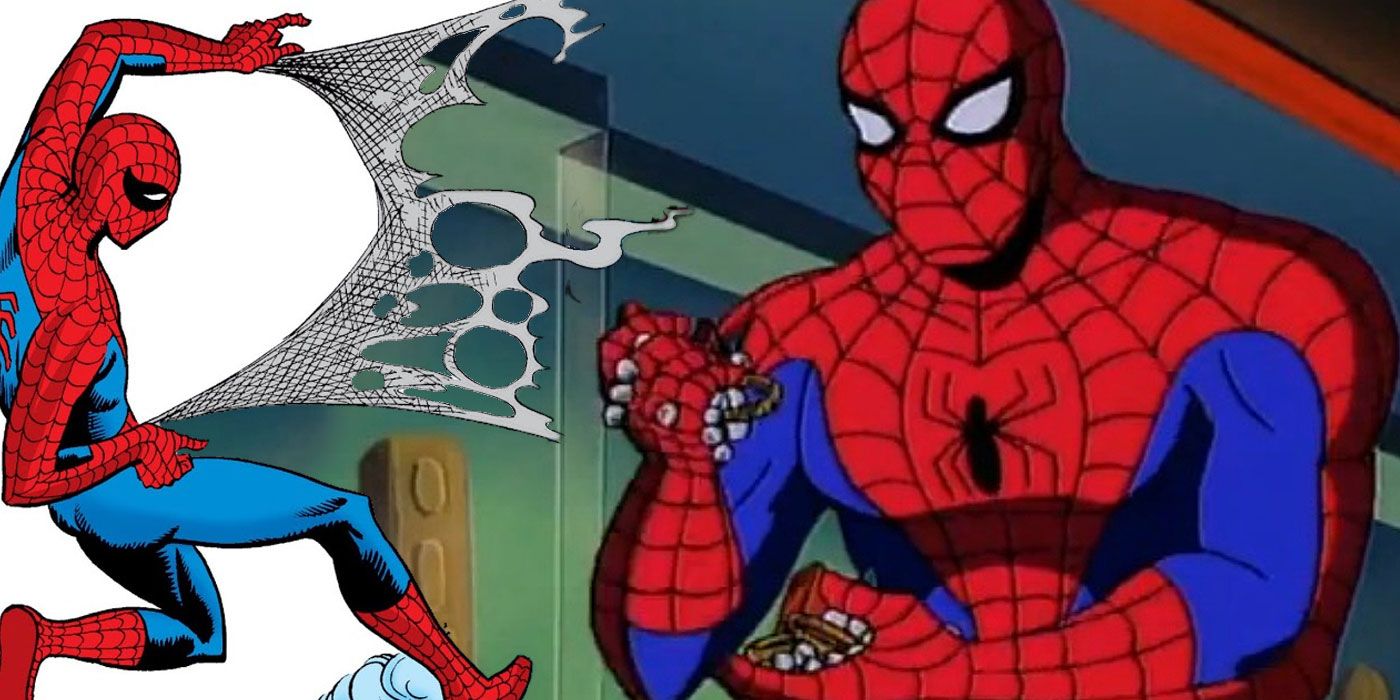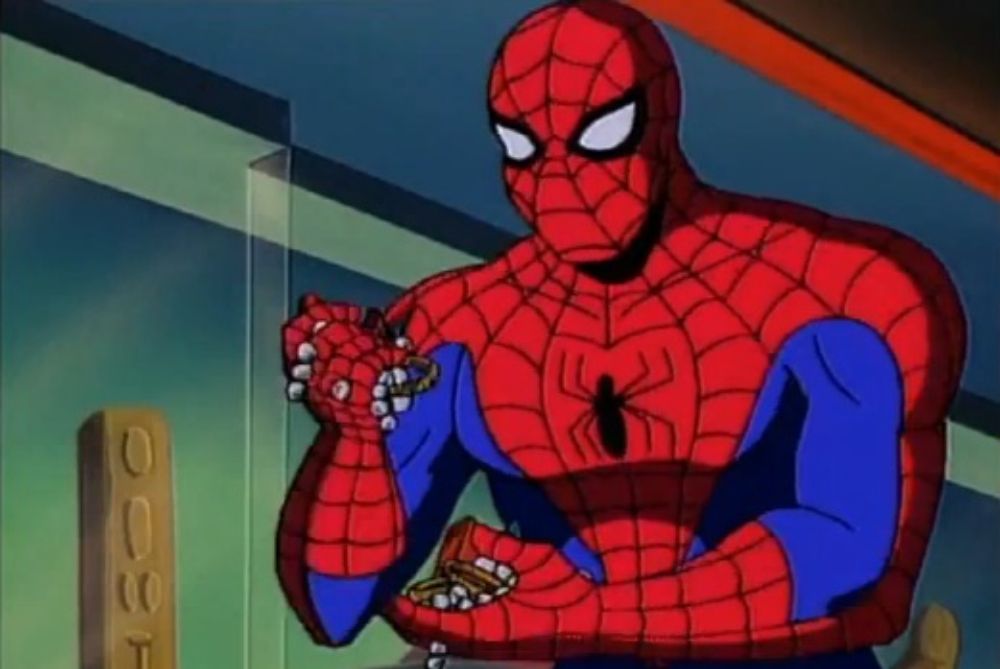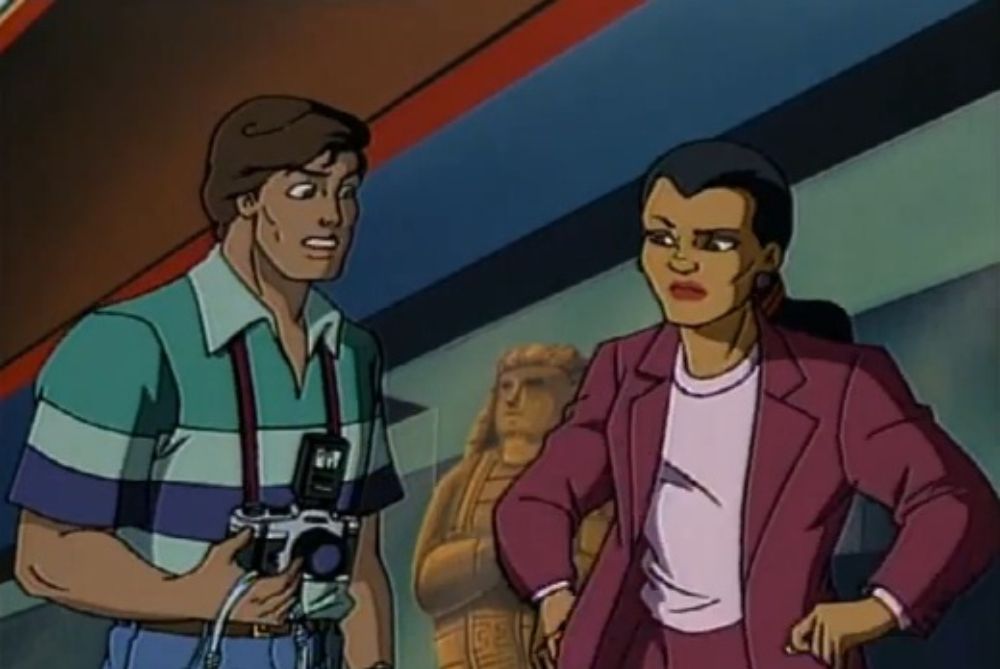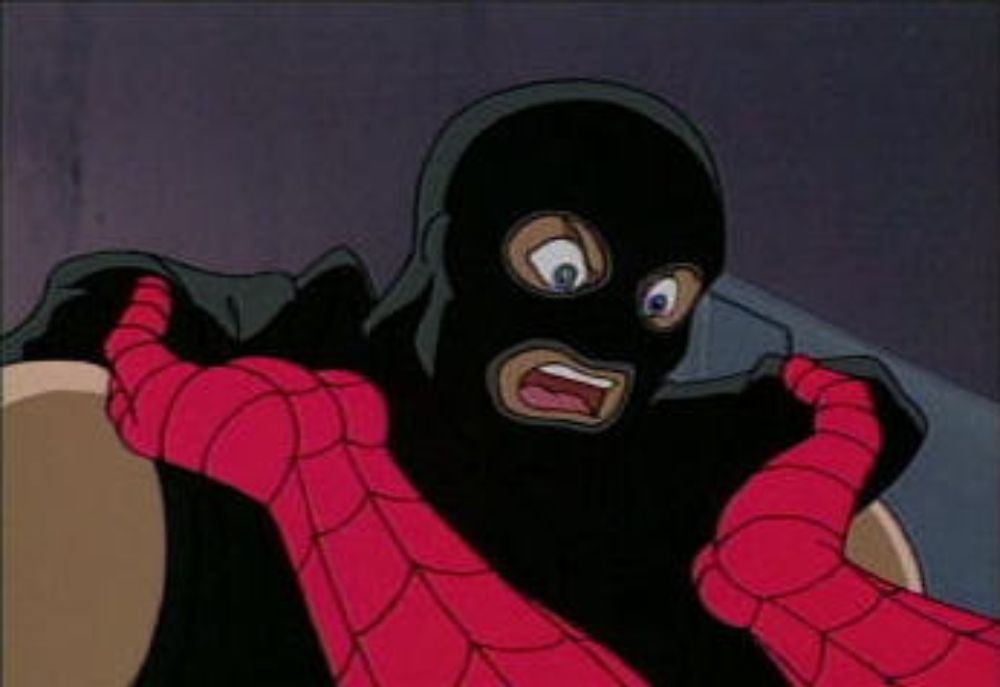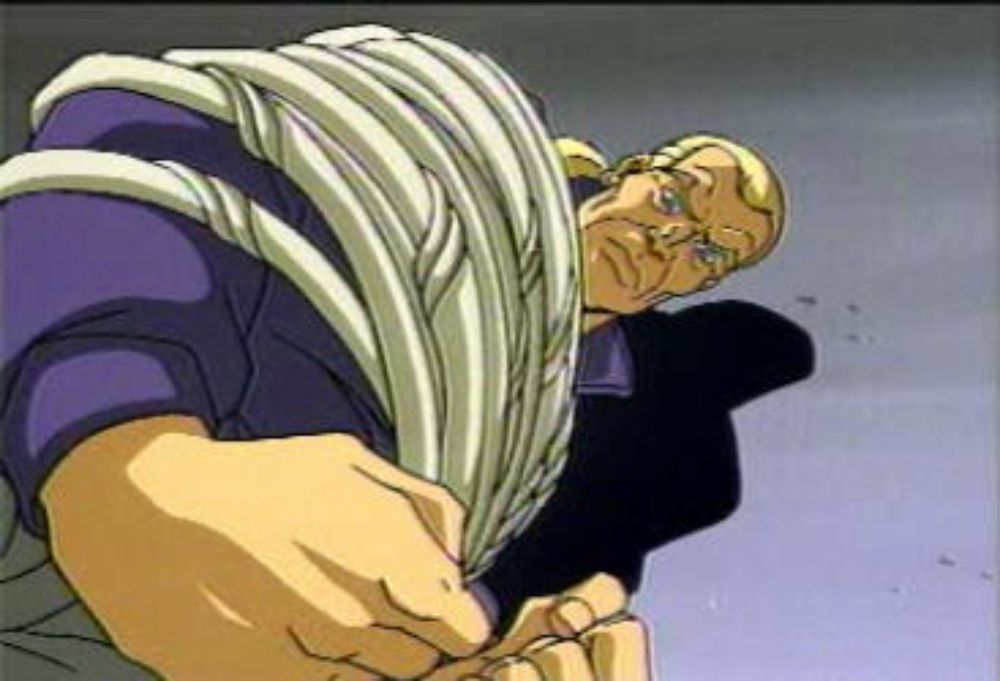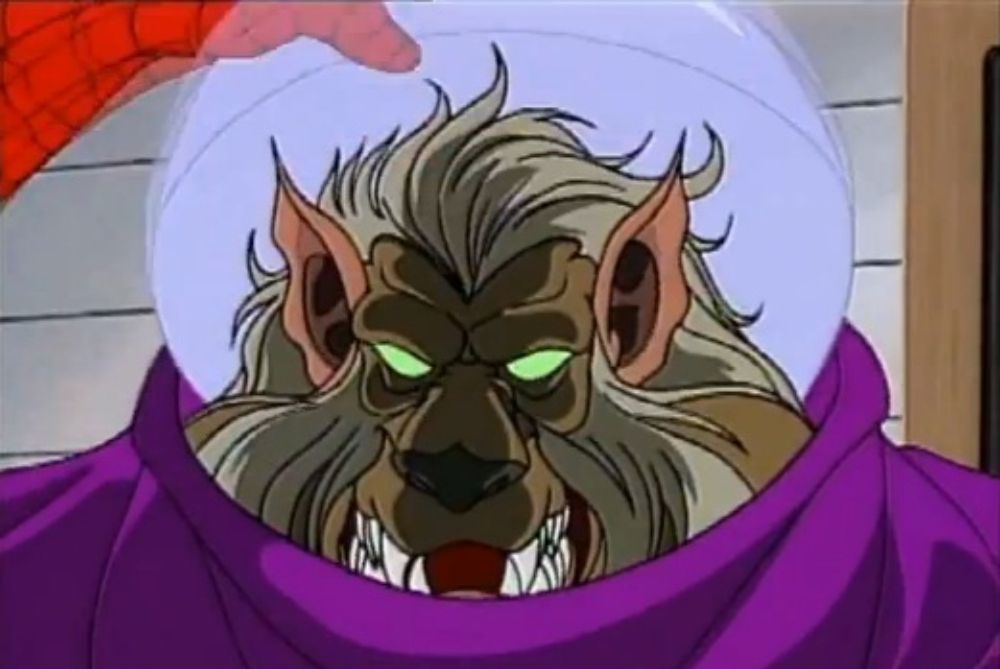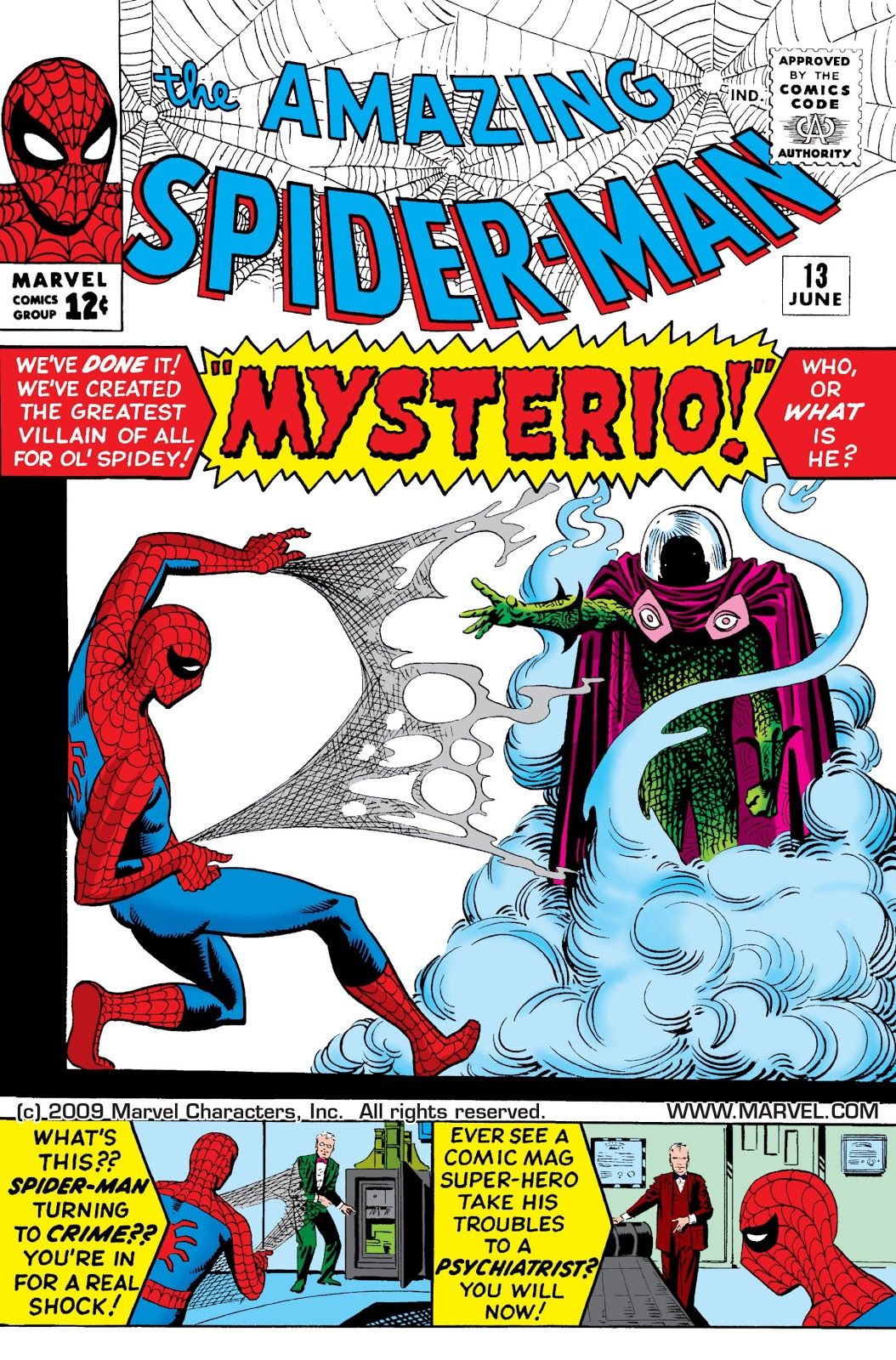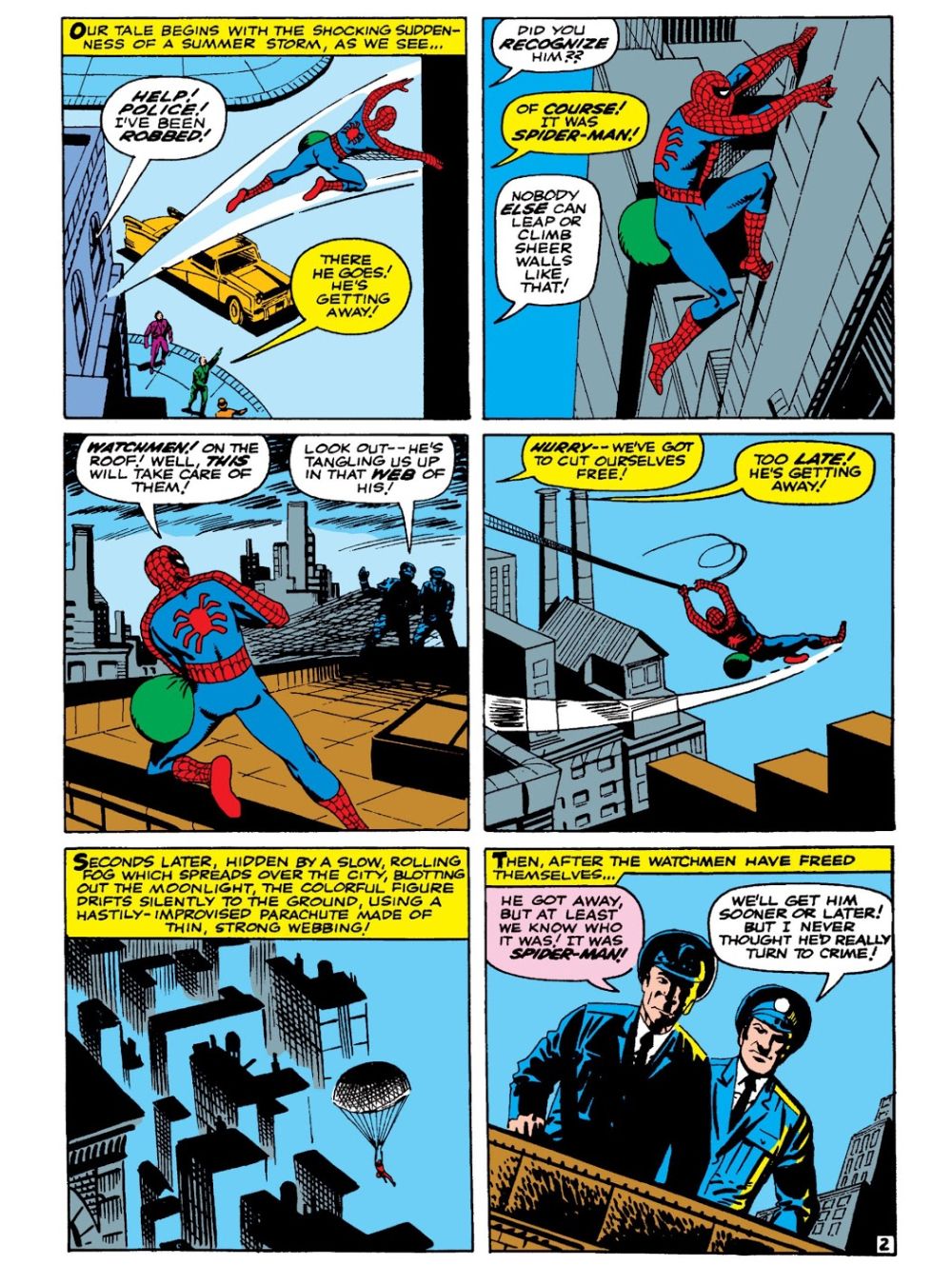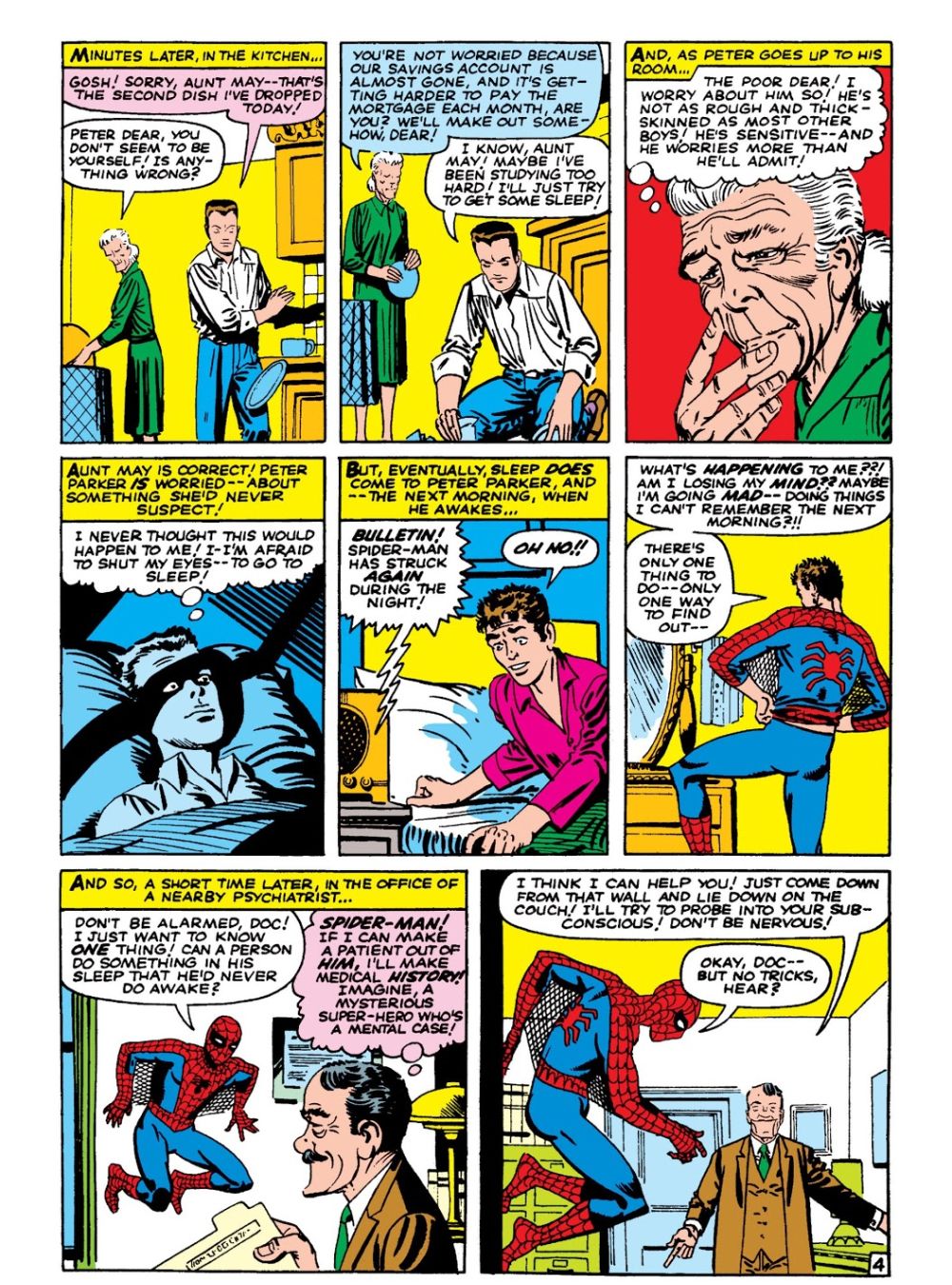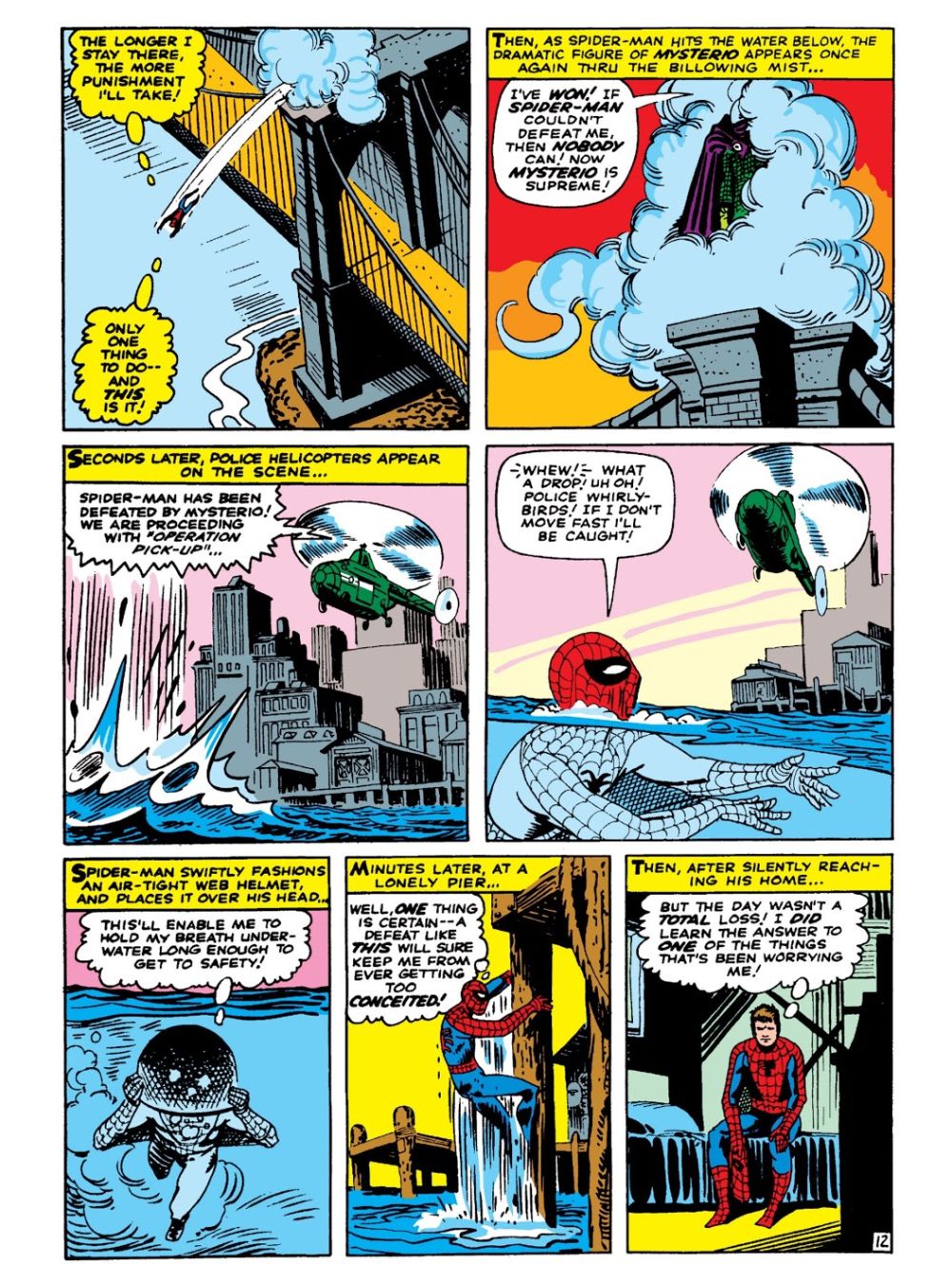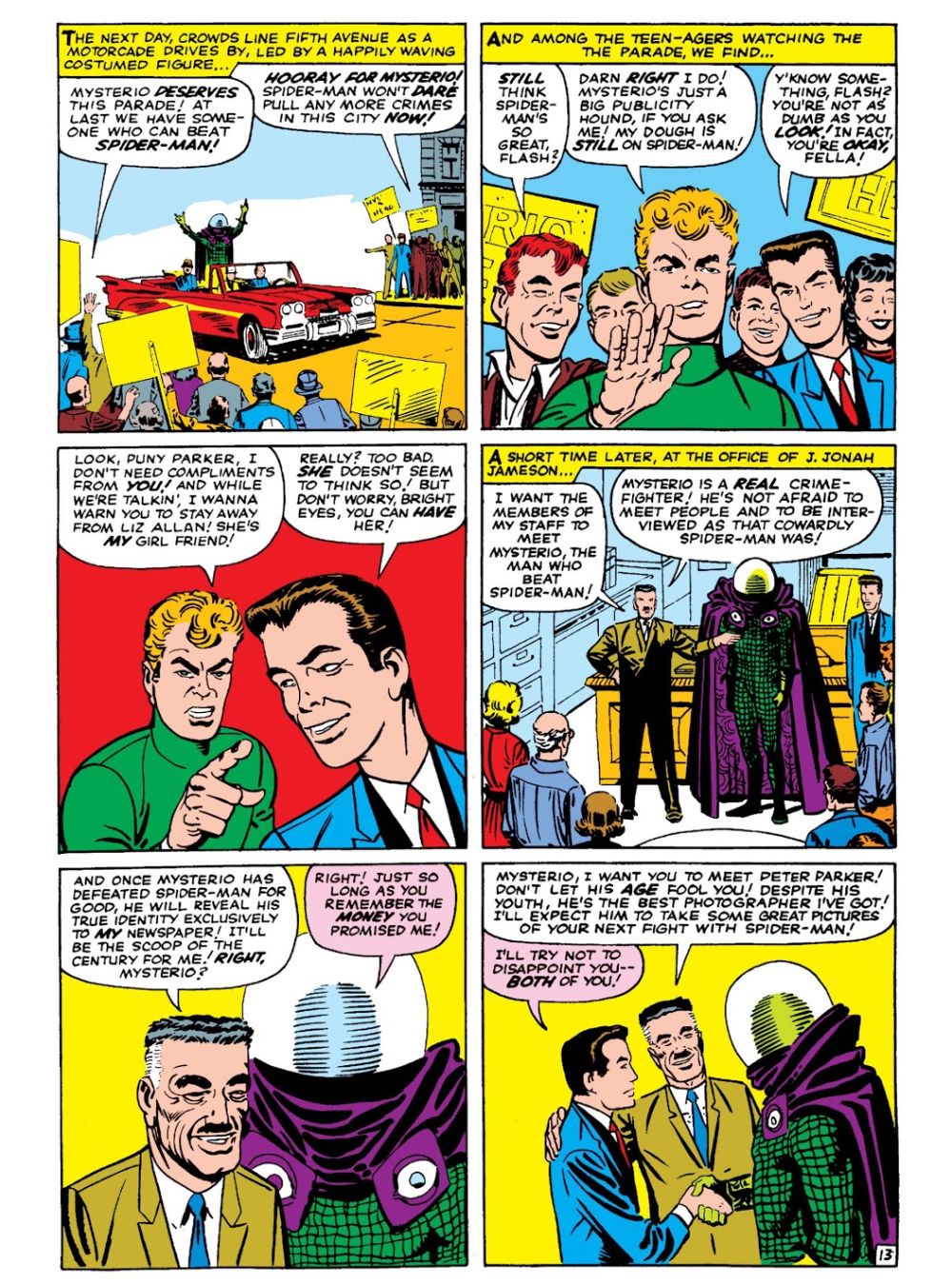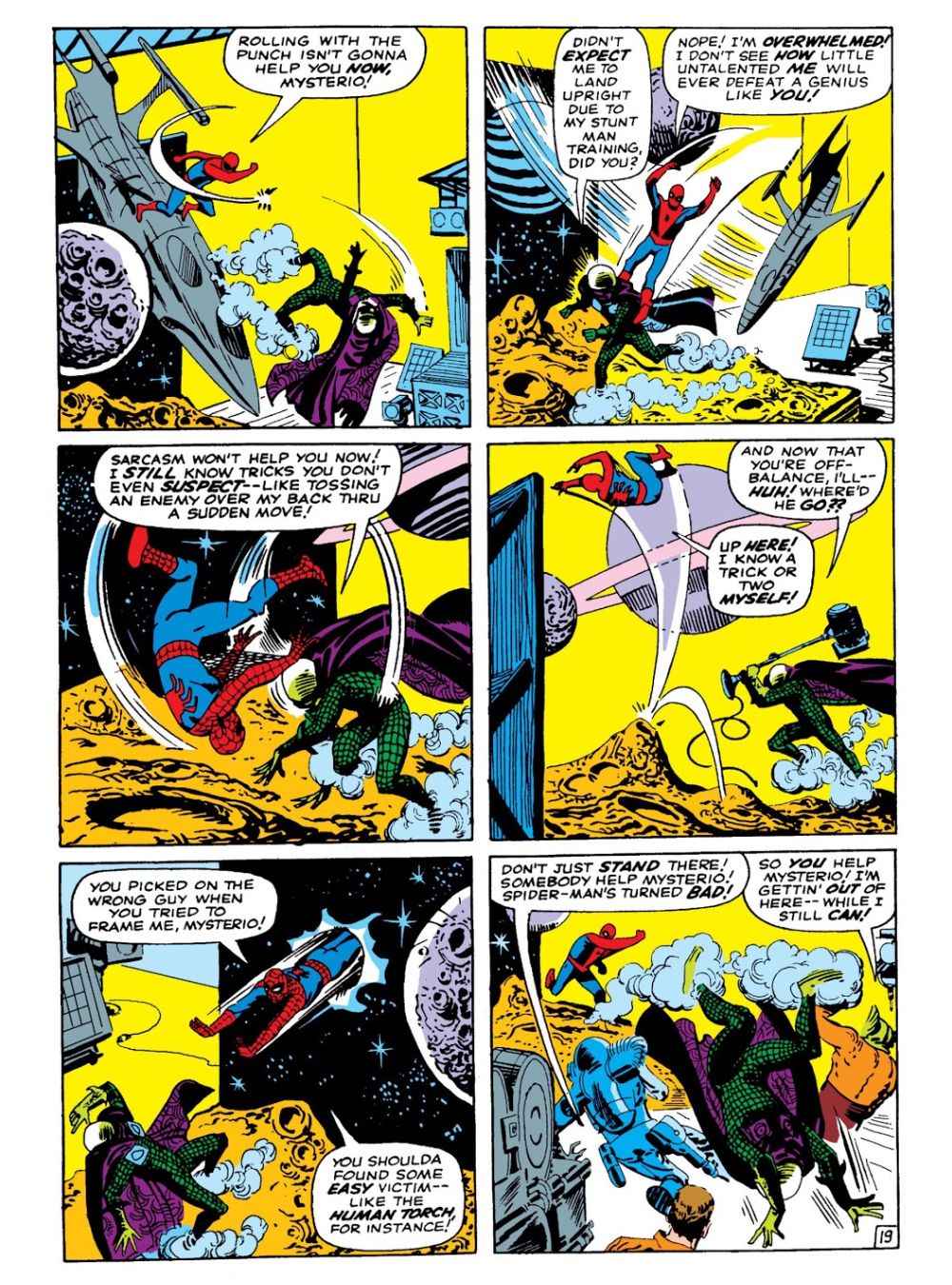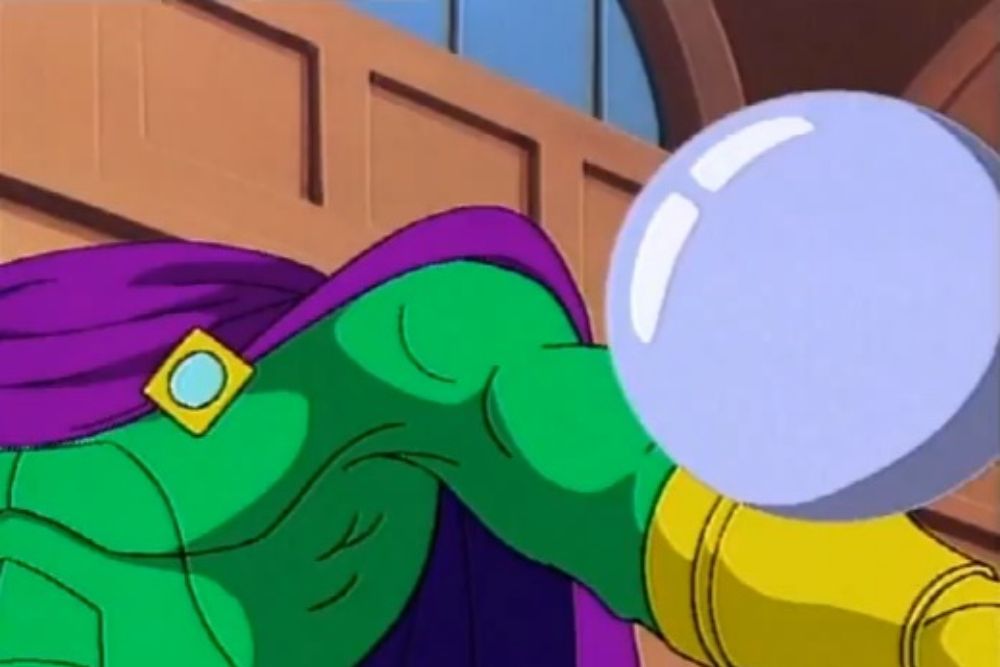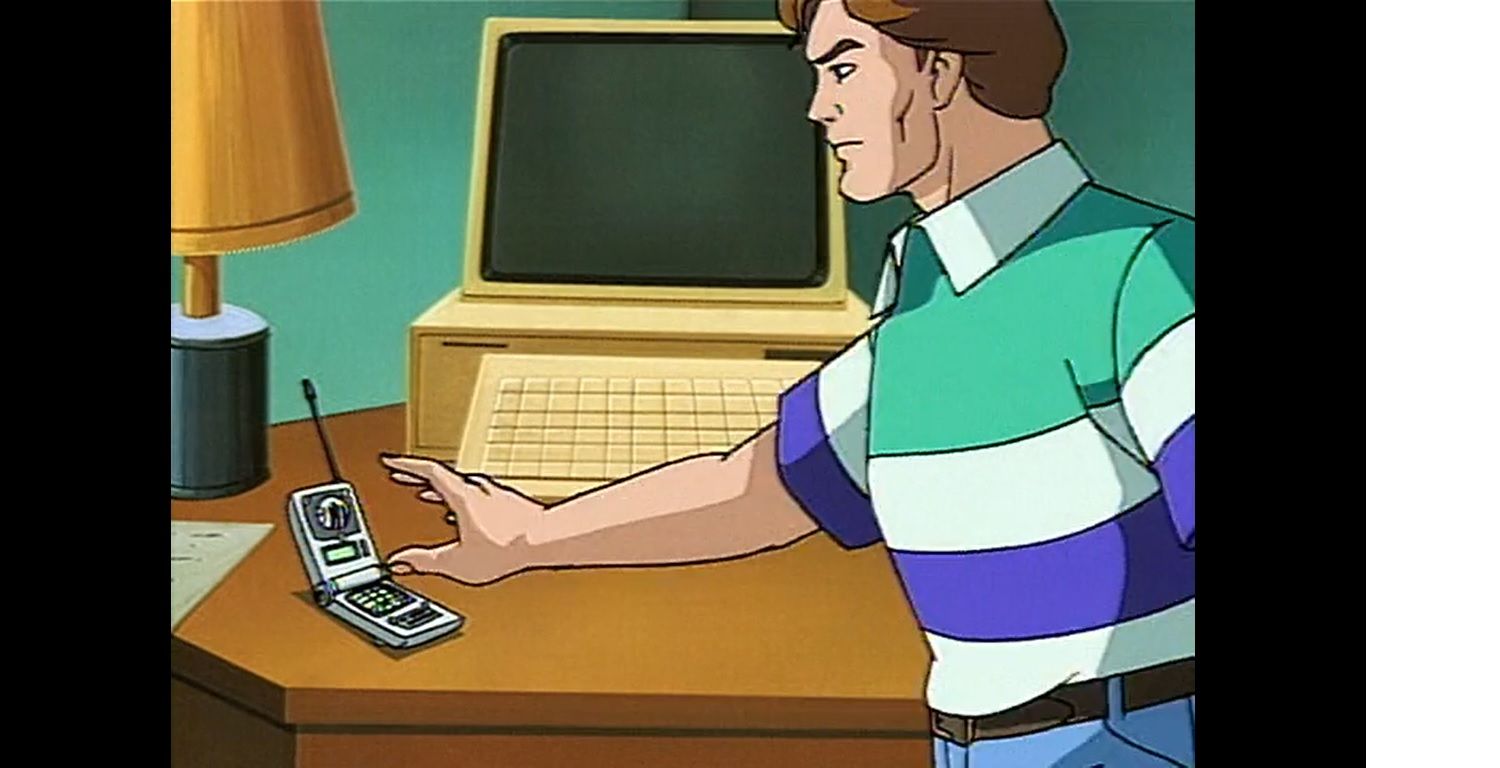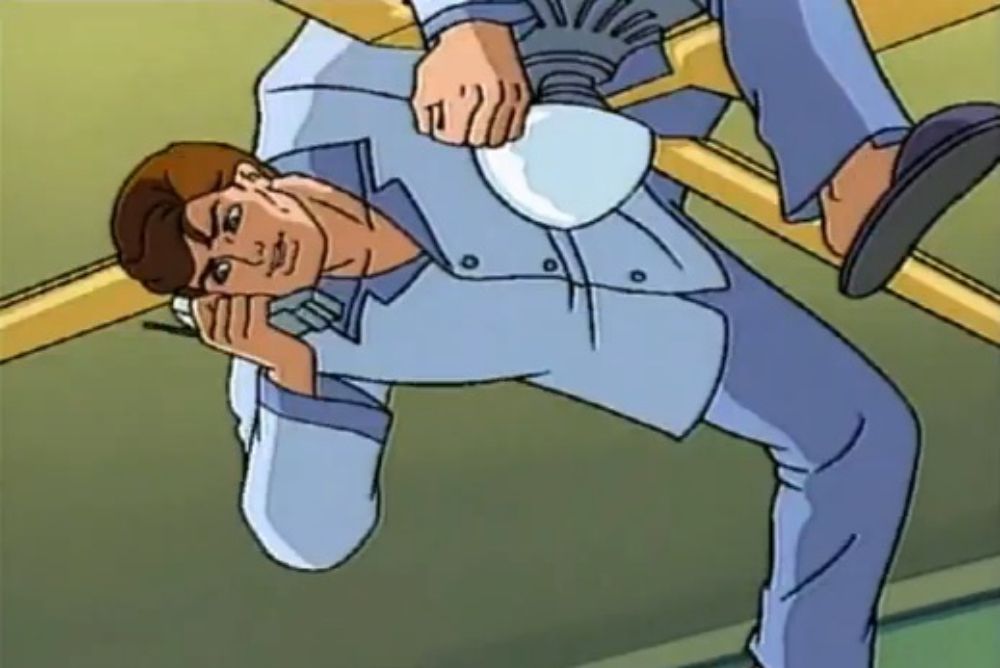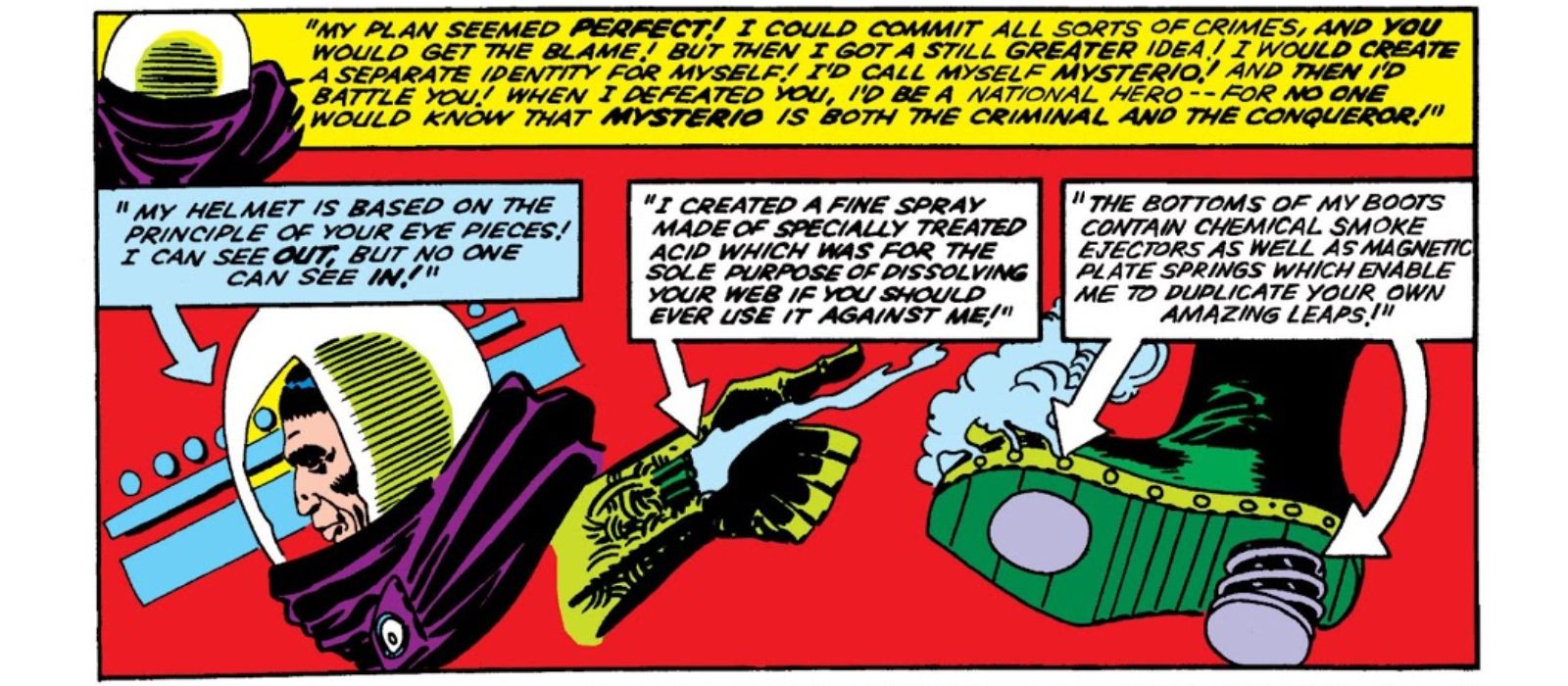Welcome to Adventure(s) Time's sixty-sixth installment, a look at animated heroes of the past. This week, we honor two of the icons we lost this year, Stan Lee and Steve Ditko. Many of today's fans were first introduced to their most famous collaboration through the 1990s Spider-Man: The Animated Series, which featured a few stories lifted directly from the original comics.
One of the earliest stories adapted was The Amazing Spider-Man #13, "The Menace of...Mysterio!" The animated adaptation aired on February 25, 1995, featuring a script from John Semper, Jr., Marv Wolfman, and Stan Berkowitz. While some of the villain introductions varied greatly from the comics canon (we're looking at you, Electro), Mysterio's story hews close to the original comic. The plot begins with a daring robbery at a New York museum's Egyptian display. A robbery committed by the amazing Spider-Man!
This is all news to Peter Parker, who's asleep upstairs at Aunt May's home. A phone call awakens him the next morning. It's MJ, rather aggressively suggesting they go on a date. Their phone conversation is a little unusual, with MJ carrying on the dialogue while in the midst of her workout routine.
This is all sanitized for Saturday morning, but it certainly seems as if the producers were working in some of the MJ cheesecake shots that were so prominent in the comics from the late '80s to early '90s. It might be the only time the show made a conscious attempt at sexualizing MJ--she's not exactly a bombshell for most of the series.
Anyway, an enthused Peter goes downstairs and soon has his spirits crushed. Aunt May is watching news footage of the robbery. And, naturally, she views it as more evidence that this Spider-Man is very bad indeed. Peter, incredulous, goes to the museum to investigate. There, he runs into NYPD Lieutenant Terri Lee.
Terri's an original creation of the cartoon's, apparently a substitute for Jean DeWolff. DeWolff was another reluctant female NYPD ally of Spidey's from the comics. She was killed off in the mid-1980s, and never appeared on the series. If it's true Gwen Stacy never appeared because Stan Lee didn't want kids to become invested in a character only to learn she's now dead in the comics...it's possible DeWolff was "banned" for similar reasons.
Lt. Lee is irritated by Peter's clumsy attempt at stealing evidence from the scene, but soon comes to view him as an important resource on all things Spider-Man. She's attempting to drag Peter downtown when Mysterio makes his first official appearance. He amuses the museum crowd with special effects tricks, and makes his exit by embarrassing Spider-Man with an illusion.
With Lt. Lee's help, Peter continues to investigate the imposter, who he soon discerns is Mysterio. J. Jonah Jameson eats up Mysterio's declaration that he's going to take in the criminal Spider-Man, declaring Mysterio the true hero. Along the way, we have two flashbacks.
One has Peter reminiscing on his origin, a first for the show. (He appears in the pilot already well along in his career, it seems.) It's pretty loyal to the traditional comics origin, although the same model for College Peter is used, implying he was never Spider-Man while in high school. (He's even in the same shirt he always wears.) Another alteration is the elimination of Spidey's stints on Ed Sullivan-style variety shows. A wrestling career takes its place, which makes sense. Variety shows were quite dead by the 1990s, while professional wrestling remained popular. You see a similar move in the 2002 film; treating Spidey's one wrestling match from his comics origin as his "showbiz" career.
The second flashback established why Mysterio is determined to ruin Spider-Man's reputation. NYPD file footage reveals Mysterio as Quentin Beck, a special effects expert who botched a job during a movie shoot on the Brooklyn Bridge. Spider-Man's appearance saved lives, but also exposed Beck's recklessness. He was arrested, served a year in prison, and now holds a grudge.
He's also holding on to the most stereotypical of all '90s "Hollywood type" hairstyles. Bleach blond hair pulled into a short ponytail. Yikes.
Peter's frustration with Mysterio's frame job, and his missed date with MJ, causes him to give up his life as Spider-Man. It's a guilt trip from Lt. Lee, and his memory of Uncle Ben's "great power" speech, that inspires him to keep going.
In the end, Mysterio is apprehended at his abandoned movie studio hideout, Jameson is humbled, and MJ agrees to give Peter a second chance. Yay, happy endings.
NEXT PAGE: What Spider-Man: TAS Kept (And Dropped) from the Stan Lee/Steve Ditko Stories
The basis for all of this comes from the Lee/Ditko days. Amazing Spider-Man #13 from June 1964 introduces us to Mysterio, the "greatest villain of all for ol' Spidey!" That cover really is vintage Ditko. The unique shapes of the smoke, Spidey's anorexic frame, the truly bizarre design of Mysterio, the classic Ditko mystery figure hiding within the dome... C'mon, kids. Of course you're putting down twelve cents for this one.
The original story provides the framework for the episode. Alterations are made, such as Mysterio robbing an elaborate museum display, instead of a generic building, as seen in the comic.
None of this fundamentally changes the story, of course. One variation from the original story is just how disturbed Peter is by these robberies. He's immediately convinced that he could be going insane, so he seeks out a shrink.
The cartoon is far more restrained. Peter immediately knows an imposter is behind this, and uses his deductive skills to find the guy out. The Lee/Ditko original also has more drama for Peter's personal life. Here, he's facing the possibility of Aunt May missing a mortgage payment, now that her savings have dried up. Plus, his girlfriend Betty Brant is upset about this teenage blonde who's been hanging around him. That blonde is Liz Allan, the girlfriend of Peter's personal bully Flash Thompson. Flash has his own crisis this issue, defending his hero Spider-Man from anyone who believes he's a crook.
It's important to remember just how unusual this all was at the time. The idea of a supporting cast with real personalities, who did more than serve the scenes with the hero, just wasn't something you saw in superhero comics. And giving Peter adult problems, in addition to teenage romantic issues, made Spider-Man an odd, yet also uniquely realistic, comic.
Many of the following beats are familiar to anyone who saw the episode. Including that confrontation at the Brooklyn Bridge. Spider-Man even has a similar method of escape in the cartoon.
One alteration the show made was the introduction of Lt. Lee. In the comic, Jameson is even more enamored with Mysterio. Peter is able to locate his hideout here during a meeting at the Daily Bugle. Jameson pressures him into shaking Mysterio's hand; a spider-tracer is slipped on his cape in the process.
Both finales occur at film studios, however. And both have happy endings.
Here, Peter is given a large enough payment for his photos to make the mortgage payment. Flash's loyalty is rewarded, and Jameson is embarrassed. See, not every Ditko issue ended with Peter brooding in the shadows.
NEXT PAGE: Spider-Man: TAS's Mysterio Redesign Was a Failure
The Wrap-Up
Design-y
Overall, this is a decent looking episode. Famed Japanese animation studio TMS was hired for the series, and a few moments of the episode do feel like their work. Now, the post-production work was handled by Marvel Productions, which implemented the digital coloring which has always looked...off, and those CGI skyscrapers and landscapes. Those have not aged well. It's widely believed TMS subcontracted the show out to increasingly cheaper studios, but for most of the first season the animation is fine.
The redesign of Mysterio, though, is a disappointment. The unique texture of Ditko's design is erased, and instead his body is covered by this heinous day-glo green color.
Continuity Notes
The first season of the series can't seem to decide if Peter is still new at the wallcrawling game, or if we're witnessing his earliest adventures. This episode is leaning more towards the "established hero, at this for years" direction. He can't even remember Beck's threats to destroy him from their first encounter.
Also, it appears the comics have gone along with this idea of Spidey destroying Beck's career, pre-Mysterio. If you're willing to touch post-"One More Day" continuity, the story is in Amazing Spider-Man Vol 3 #1.1.
I Love the '90s
The cordless phone Peter keeps by his bed is the size of a cinder block. And his cellphone certainly has an interesting look. (Odd the producers gave one to Peter in 1995; cellular phones were viewed as an extravagance in those days.)
Hey, I Know that Voice
Actress/singer Dawnn Lewis voices Lt. Terri Lee. She portrayed Jaleesa Vinson–Taylor on the NBC sitcom A Different World in the 1980s, in addition to numerous roles. She's also appearing in the Veronica Mars revival.
"Huh?" Moment
The eternally neurotic Peter, so concerned about what Aunt May thinks, isn't bothered at all by the ceiling fan he accidentally destroys after leaping for joy during his conversation with MJ.
Hollywood Values
I like the "Ain't broke, don't fix it" attitude these shows sometimes took towards old stories. The fundamentals of the Lee/Ditko issue are sound. So, why mess with them? Heck, why haven't we seen this basic story adapted for the movies? Clearly, Mysterio is a villain made for film. (Who knows how he'll be treated in the next movie, when he finally debuts. Casting a "name" actor makes me suspicious he'll be spending any time behind the fishbowl.)
The animated version does an admirable job updating the material. Giving Mysterio a specific reason for singling out Spider-Man does make sense, and has a classic Marvel feel to it. Updating his "powers" to include tiny holo-cubes that generate his illusions is also smart. When the episode tries to veer dramatic, going with the "Spider-Man no more!" bit...that's a little much. The Lee/Ditko story handles the drama better, actually. Still, it's an admirable episode. One of the best episodes of the first season, which makes it easily one of the best Spider-Man episodes period.
So that’s all for now. If you have any suggestions for the future, just leave a comment or contact me on Twitter.

